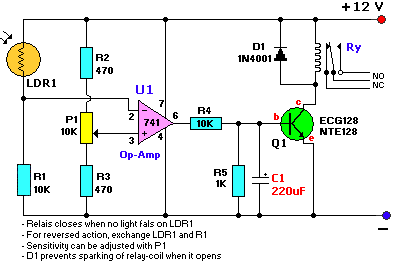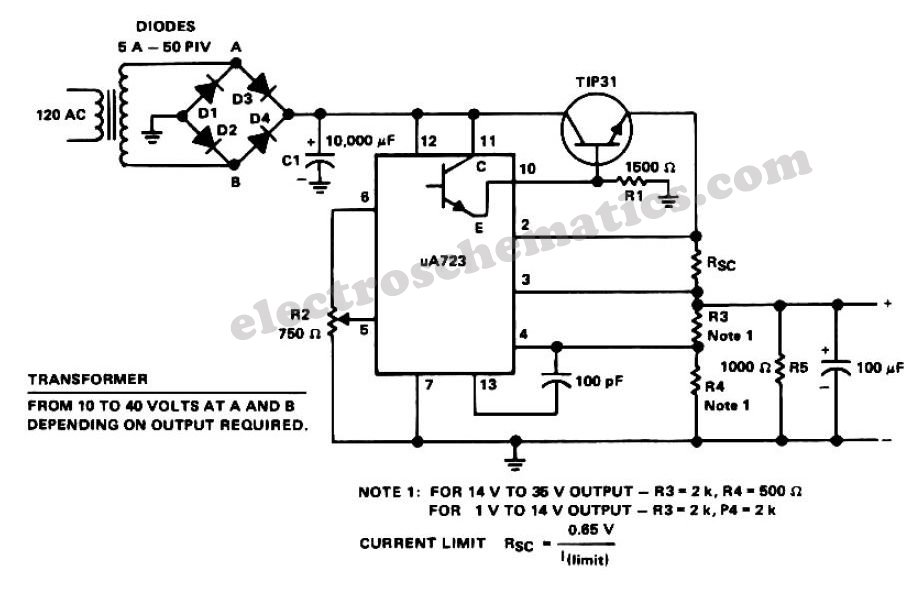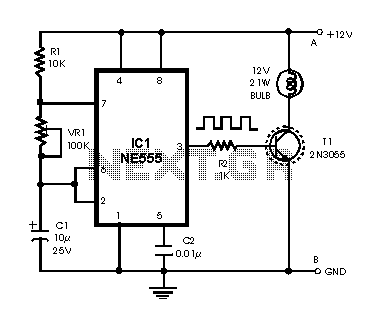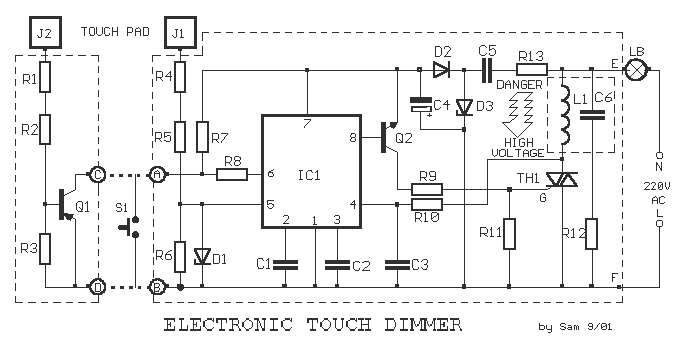
light dark sensor with relay circuit

The schematic diagram has been modified to include a 220µF smoothing capacitor connected between the base of transistor Q1 and ground. This addition effectively mitigated the issue of relay chatter, which involved rapid on/off switching at light levels. The incorporation of the capacitor completely resolved the relay chatter problem. According to the circuit designer, the relay is intended to close only when "no light falls on LDR1." However, testing has shown that users can adjust the potentiometer (P1) to close the relay at any desired light level. By interchanging the positions of the 10K resistor (R1) and the light-dependent resistor (LDR1), the relay will close in the presence of light instead of darkness, allowing a device to be automatically switched off at night. Given that this circuit utilizes a relay, modifications are necessary to decrease power consumption to make it more suitable for low-current applications powered by renewable energy sources.
The modified circuit design includes essential components such as a transistor (Q1), a relay, a light-dependent resistor (LDR1), a potentiometer (P1), and associated resistors. The smoothing capacitor (C1) plays a critical role in stabilizing the voltage at the base of the transistor, ensuring that it operates smoothly without fluctuations that could cause unwanted relay activation.
When the ambient light level falls below a certain threshold, the LDR1 decreases its resistance, allowing current to flow through the base of Q1. This, in turn, activates the relay, closing the circuit and powering the connected load. The potentiometer (P1) provides flexibility, enabling users to set the sensitivity of the circuit according to their specific requirements.
By swapping the positions of R1 and LDR1, the behavior of the circuit changes, allowing it to operate in a more versatile manner. This adjustment is particularly beneficial for applications where devices need to be turned off automatically during the night, thereby conserving energy.
To enhance the circuit's efficiency for renewable energy applications, it is crucial to consider the selection of components that minimize power consumption. This may involve using a low-power relay or implementing a solid-state relay (SSR) that can operate with minimal current draw. Additionally, optimizing the values of resistors and capacitors in the circuit can further reduce power requirements, making the design more sustainable and suitable for integration with solar panels or other renewable energy sources.We have modified the schematic diagram above with the addition of a 220uF smoothing capacitor between the base of transistor Q1 and ground. Without this capacitor, the relay chatter (relay switching on and off many times per second) was terrible around the switch on/off light level.
By adding the capacitor, relay chatter wascompletely eliminated. According to the designer of this circuit, the relay will be closed only when "NO light falls on LDR1", however, in testing this circuit proved to work very well with the user able to adjust the potentiometer (P1) to automatically close the relay at whatever light level they chose. By swapping the postitions of the 10K resistor (R1) and the LDR (LDR1), the relay will be closed when the LDR is under light rather than under darkness.
Therefore a device can automatically be switched off at nighttime. Since this circuit still contains a relay we need to make some changes* to reduce the amount of power to make it more suitable for renewable energy powered low-current applications. 🔗 External reference
The modified circuit design includes essential components such as a transistor (Q1), a relay, a light-dependent resistor (LDR1), a potentiometer (P1), and associated resistors. The smoothing capacitor (C1) plays a critical role in stabilizing the voltage at the base of the transistor, ensuring that it operates smoothly without fluctuations that could cause unwanted relay activation.
When the ambient light level falls below a certain threshold, the LDR1 decreases its resistance, allowing current to flow through the base of Q1. This, in turn, activates the relay, closing the circuit and powering the connected load. The potentiometer (P1) provides flexibility, enabling users to set the sensitivity of the circuit according to their specific requirements.
By swapping the positions of R1 and LDR1, the behavior of the circuit changes, allowing it to operate in a more versatile manner. This adjustment is particularly beneficial for applications where devices need to be turned off automatically during the night, thereby conserving energy.
To enhance the circuit's efficiency for renewable energy applications, it is crucial to consider the selection of components that minimize power consumption. This may involve using a low-power relay or implementing a solid-state relay (SSR) that can operate with minimal current draw. Additionally, optimizing the values of resistors and capacitors in the circuit can further reduce power requirements, making the design more sustainable and suitable for integration with solar panels or other renewable energy sources.We have modified the schematic diagram above with the addition of a 220uF smoothing capacitor between the base of transistor Q1 and ground. Without this capacitor, the relay chatter (relay switching on and off many times per second) was terrible around the switch on/off light level.
By adding the capacitor, relay chatter wascompletely eliminated. According to the designer of this circuit, the relay will be closed only when "NO light falls on LDR1", however, in testing this circuit proved to work very well with the user able to adjust the potentiometer (P1) to automatically close the relay at whatever light level they chose. By swapping the postitions of the 10K resistor (R1) and the LDR (LDR1), the relay will be closed when the LDR is under light rather than under darkness.
Therefore a device can automatically be switched off at nighttime. Since this circuit still contains a relay we need to make some changes* to reduce the amount of power to make it more suitable for renewable energy powered low-current applications. 🔗 External reference





